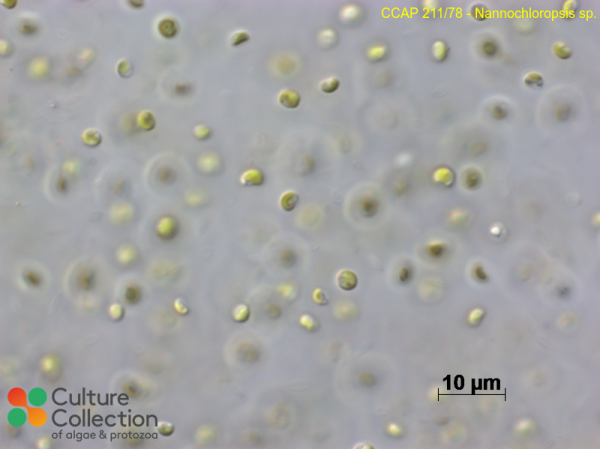References [ 20 ]
Sayegh FAQ, Radi N & Montagnes DJS (2007) Do strain differences in microalgae alter their relative quality as a food for the rotifer Brachionus plicatilis? Aquaculture 273: 665-678.
Sayegh FAQ & Montagnes DJS (2011) Temperatures shifts induce intraspecific variation in microalgal production and biochemical composition. Bioresource Technology 102: 3007-3013.
Andersen RA, Brett RW, Potter D & Sexton JP (1998) Phylogeny of the Eustigmatophyceae based upon 18S rDNA, with emphasis on Nannochloropsis. Protist 149: 61-74.
Natrah FMI, Kenmegne MM, Wiyoto W, Sorgeloos P, Bossier P & Defoirdt T (2011) Effects of micro-algae commonly used in aquaculture on acyl-homoserine lactone quorum sensing. Aquaculture 317: 53-57.
Wood BJB, Grimson PHK, German JB & Turner M (1999) Photoheterotrophy in the production of phytoplankton organisms. Journal of Biotechnology 70: 175-183.
Mayers JJ, Flynn KJ & Shields RJ (2013) Rapid determination of bulk microalgal biochemical composition by Fourier-Transform Infrared spectroscopy. Bioresource Technology 148: 215-220.
Mayers JJ, Flynn KJ & Shields RJ (2014) Influence of the N:P supply ratio on biomass productivity and time-resolved changes in elemental and bulk biochemical composition of Nannochloropsis sp. Bioresource Technology 169: 588-595.
Bosma R, de Vree JH, Slegers PM, Janssen M, Wijffels RH & Barbosa MJ (2014) Design and construction of the microalgal pilot facility AlgaePARC. Algal Research 6B: 160-169.
Slocombe SP, Zhang QY, Ross M, Anderson A, Thomas NJ, Lapresa A, Rad Menéndez C, Campbell CN, Black KD, Stanley MS & Day JG (2015) Unlocking nature's treasure-chest: Screening for oleaginous algae. Scientific Reports 5: 09844.
Hulatt CJ, Wijffels RH, Bolla S & Kiron V (2017) Production of fatty acids and protein by Nannochloropsis in flat-plate photobioreactors. PLoS ONE 12: e0170440.
Fawley MW, Jameson I & Fawley KP (2015) The phylogeny of the genus Nannochloropsis (Monodopsidaceae, Eustigmatophyceae), with descriptions of N. australis sp. nov. and Microchloropsis gen. nov.. Phycologia 54: 545-552.
Fret J, Roef L, Blust R, Diels L, Tavernier S, Vyverman W & Michiels M (2017) Reuse of rejuvenated media during laboratory and pilot scale cultivation of Nannochloropsis sp. Algal Research 27: 265-273.
Mayers JJ, Ekman Nilsson A, Albers E & Flynn KJ (2017) Nutrients from anaerobic digestion effluents for cultivation of the microalga Nannochloropsis sp. - Impact on growth, biochemical composition and the potential for cost and environmental impact savings. Algal Research 26: 275-286.
Balduyck L, Bruneel C, Goiris K, Dejonghe C & Foubert I (2018) Influence of high pressure homogenization on free fatty acid formation in Nannochloropsis sp. European Journal of Lipid Science and Technology -: -.
Zhang C, Slegers PM, Wisse J, Sanders JPM & Bruins ME (2018) Sustainable scenarios for alkaline protein extraction from leafy biomass using green tea residue as a model material Biofuels Bioproducts & Biorefining 12: 586-599.
Norsker NH, Michiels M, Slegers PM, Swinkels GLAM, Barbosa MJ & Wijffels RH (2019) Productivity of Nannochloropsis oceanica in an industrial closely spaced flat panel photobioreactor Algal Research 43: 101632.
Giraldo JB, Stock W, Dow L, Roef L, Willems A, Mangelinckx S, Kroth PG, Vyverman W & Michiels M (2019) Influence of the algal microbiome on biofouling during industrial cultivation of Nannochloropsis sp. in closed photobioreactors Algal Research 42: 101591.
Darienko T, Rad Menéndez C, Campbell C & Pröschold T (2019) Are there any true marine Chlorella species? Molecular phylogenetic assessment and ecology of marine Chlorella-like organisms, including a description of Droopiella gen. nov. Systematics and Biodiversity 17: 811-829.
de Vree JH, Bosma R, Janssen M, Barbosa MJ & Wijffels RH (2015) Comparison of four outdoor pilot-scale photobioreactors. Biotechnology for Biofuels 8: 215.
Sivakumar R & Ghosh S (2025) Comprehensive analysis of critical nutrient factors influencing the tropism of Nannochloropsis sp. for eicosapentaenoic acid-rich lipid production Food and Bioproducts Processing 149: 305-314.

